July 26, 2022
12 Different Types of Khichdi in India
CM Content Team


View all
140+
Resorts
July 26, 2022
CM Content Team
Khichdi has been an integral part of Indian cuisine for a long time. Easy to make with only a few ingredients, healthy, and easy to digest, this humble dish has satiated hunger and given us the much-needed warmth and comfort when one feels sick. The best thing about Khichdi is that it is a wholesome meal that provides full nourishment to the body.
In fact, many doctors and nutritionists in India recommend having Khichdi for people of all age groups. Since it is made of a combination of healthy ingredients like lentils, rice and sometimes vegetables, it is a protein-rich dish that is known to give your body energy and make you feel full for a long time. Apart from its health benefits, Khichdi is a versatile dish. Hence, almost every family cooks Khichdi in India.
While one could call Khichdi, national food of India, it isn’t one recipe for all. There are different types of Khichdi across the country. Different states have different versions of Khichdi that are made using different ingredients.
Let us look at the different types of Khichdi in India and why they change colours and tastes from state to state.
Let’s look at the different types of Khichdi in detail.
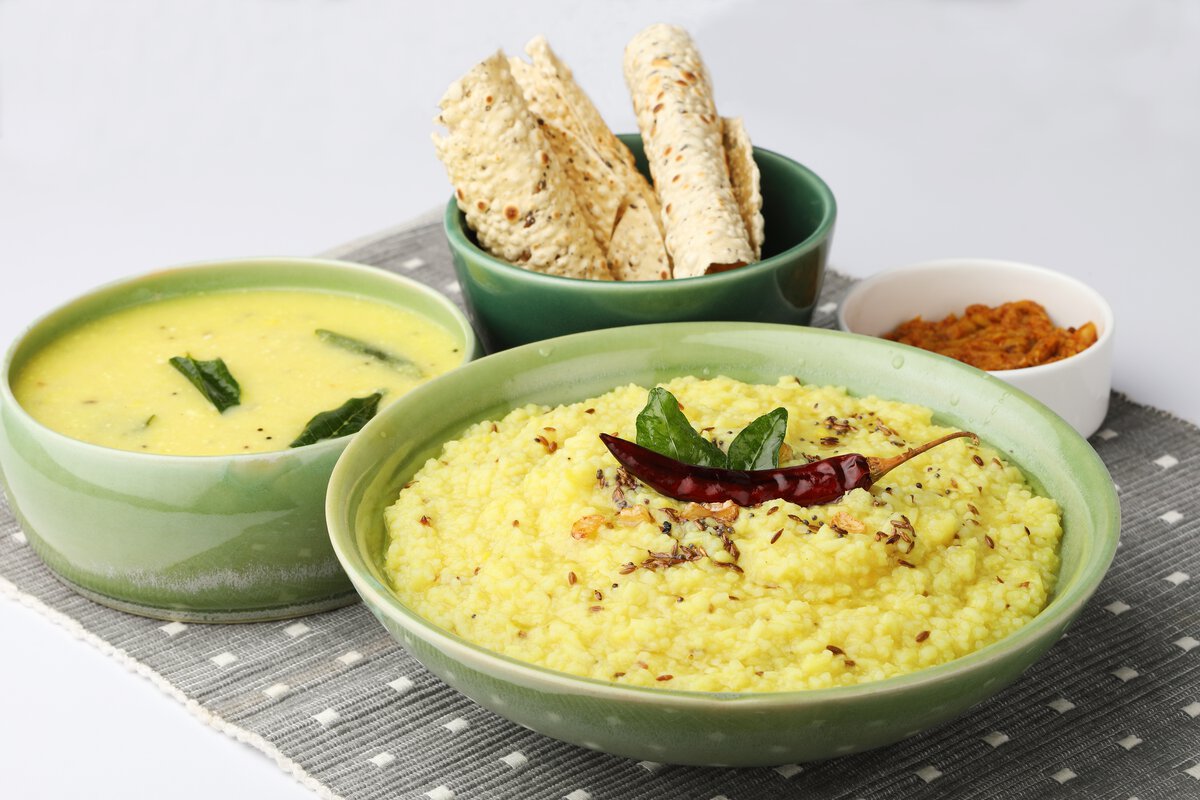
This delectable dish has a rich history associated with it. It is said that the founder of Ahmedabad city, Sultan Ahmed Shah I was so fond of Khichdi that he used to have it every day. The dish is prevalent all over the state, and different regions within Gujarat have different types of Khichdi; some are savoury, some are sweet. The savoury variety has sub-variants with and without vegetables.
But the most popular form of Gujarati Khichdi is the savoury one that is made with Rice and lentils and served with tangy and sweet Kadi as a side. The combination of Gujarati Khichdi and Kadi is a delight in every sense of the word.


Tamil Nadu is known for its unique culinary culture and many delicious dishes like dosa, idli and vada that are popular all over India. Tamil Nadu also has one of the most delicious Khichdi in India. Its version of the humble Khichdi is called Pongal.
Unlike other parts of India where Khichdi is eaten for dinner, Pongal is a breakfast meal. Made with a combination of rice, lentils and generous dollops of ghee, it is available in both sweet and savoury versions.
The sweet version, known as Chakkara Pongal is made with the same ingredients but sweetened with the addition of jaggery. The savoury version has grounded or whole black peppers and is tempered with cumin, red chilli and cashew nut.
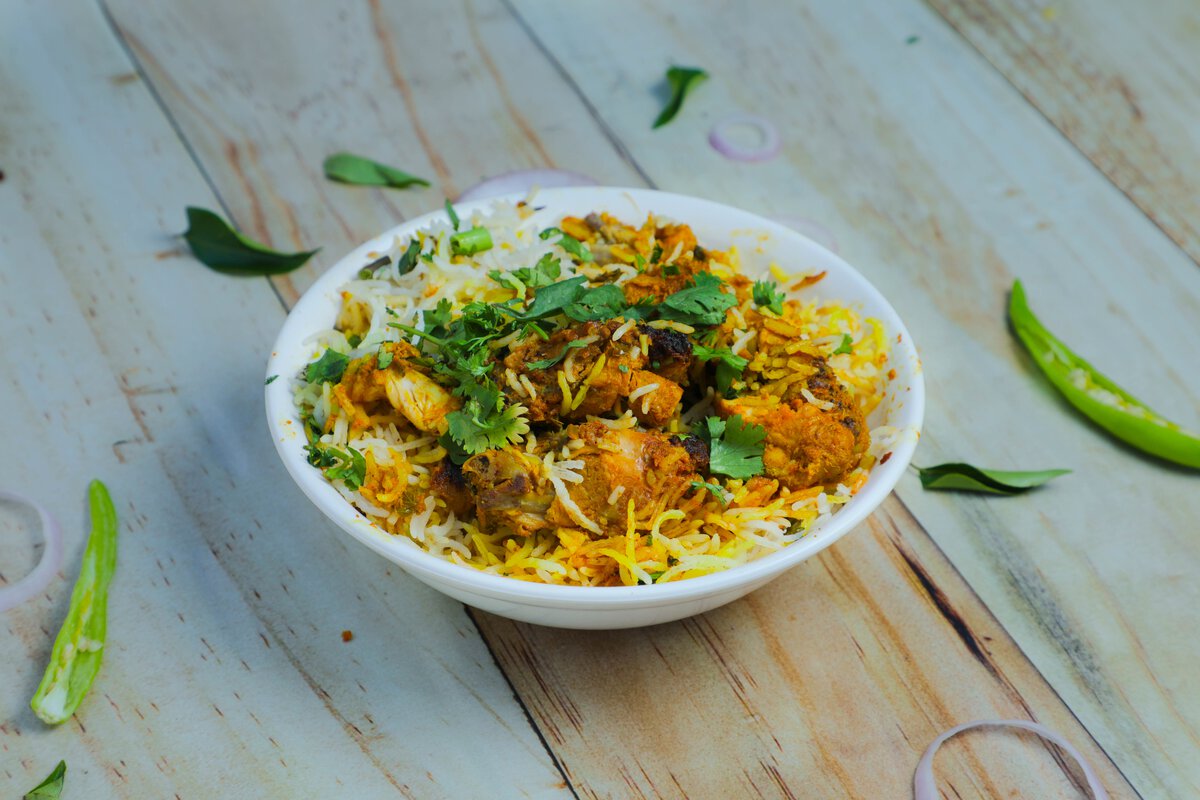
Probably the only known non-vegetarian Khichdi in India, the Keema Khichdi from Andhra Pradesh was first created by the chefs who worked in the Royal palace of the Nizams. This Khichdi tastes similar to Hyderabadi biryani, however, the cooking method for Khichdi is different from Biryani.
The main ingredients in this Khichdi are lentils, rice, and minced meat, and a whole lot of local spices. The dish is usually served with a tangy or ‘khatta’ side dish known as salan.
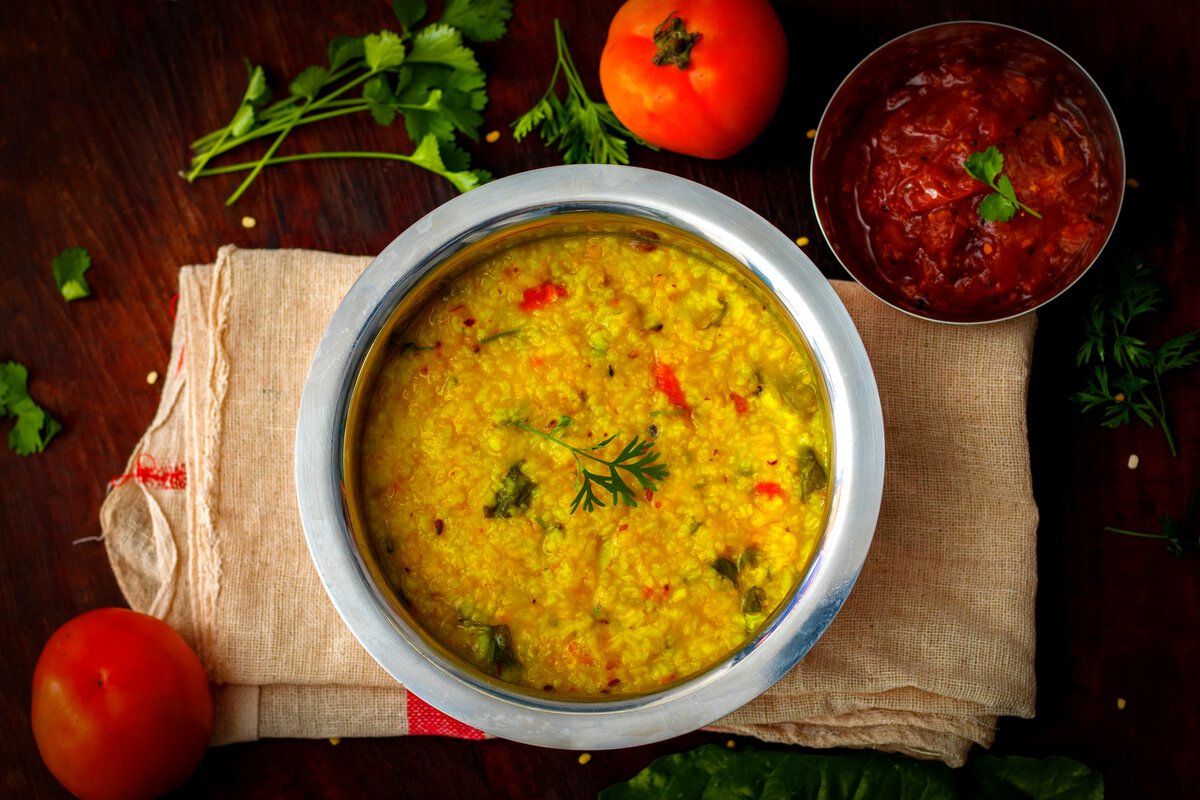
Not only is Khichdi in India different in different states, there’s also a variation in when it is consumed. Most households in Bihar cook Khichdi over the weekend and on special occasions like Makar Sankranti, a harvest festival that occurs in January. During the festival celebrations, Khichdi is offered to the deity and it is made with ingredients like rice, black gram, ginger, chilli and lots of ghee.
One of the most popular dishes in the state, Bihari Khichdi served with Choka, a dish made with mashed potatoes and eggplant and flavoured with mustard oil, sure to make your taste buds dance with joy and make feel full in the tummy and heart.
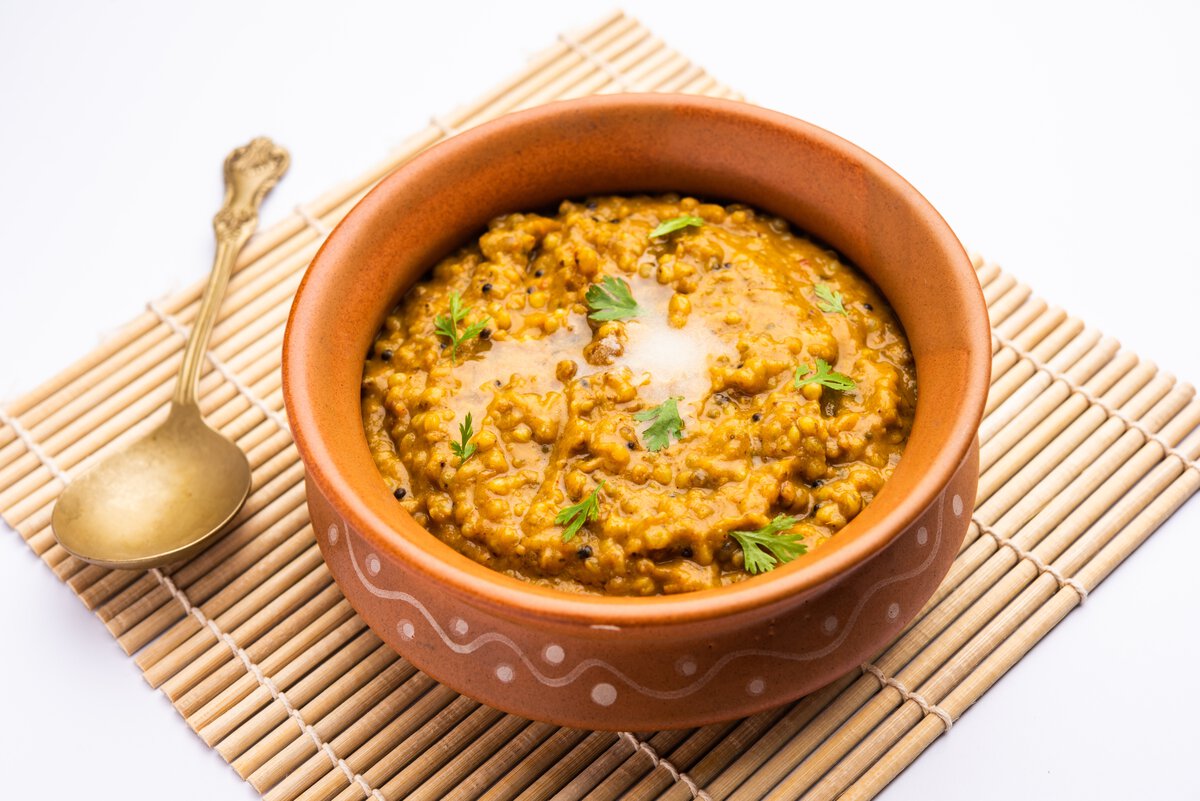
Like its vibrant and colourful culture, Rajasthan has given a unique twist to the famous food of India, Khichdi. Unlike in other parts of India where Rice is the main ingredient, Rajasthani Khichdi is made of Bajra (millet), and spices.
A staple dish in almost all Rajasthani houses, irrespective of the social status, it is served with garlic chutney, homemade pickles or yoghurt. If Bajra Khichdi is some fancy restaurant, it may have roasted dry fruits on top as garnish.
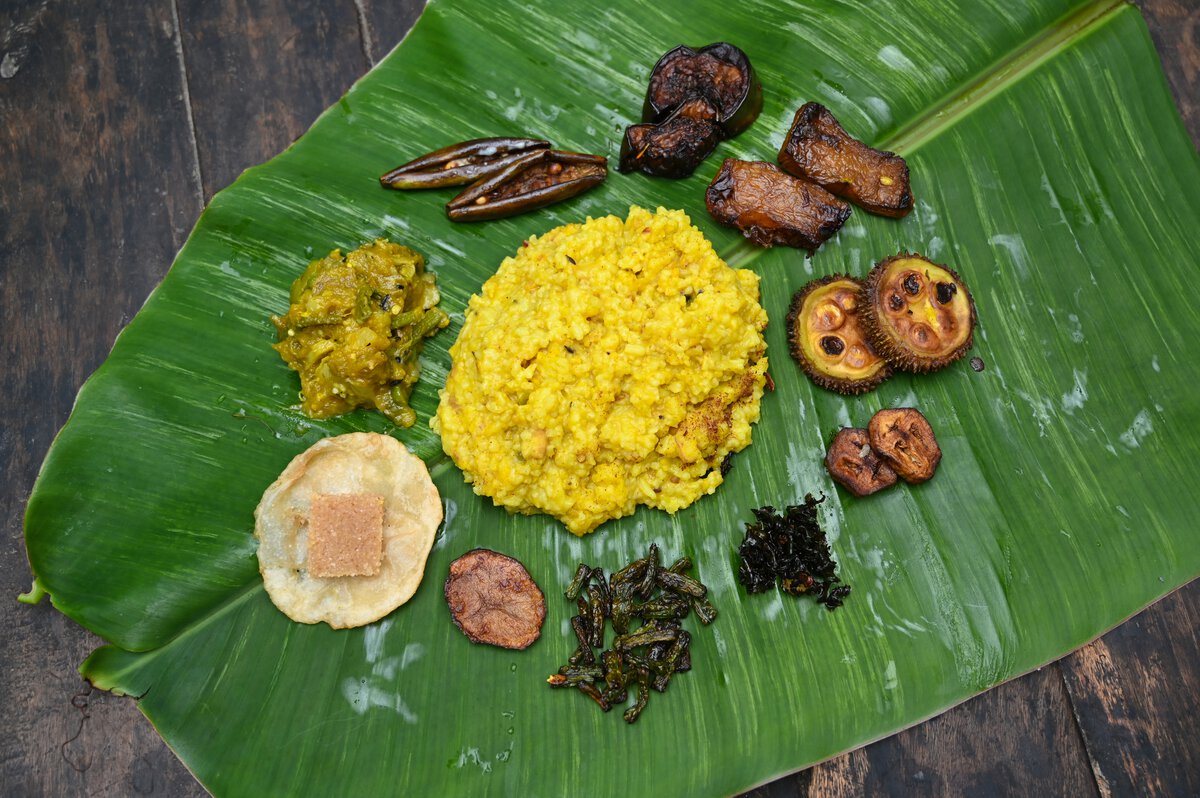
When you think of Bengali cuisine, you may think of Kolkata Biryani, Macher Jhol, and Rosogolla, right? But, Bengal has its own version of Khichdi, which the locals call Kichuri. Unlike the different types of Khichdi in India, this dish has a more porridge-like texture.
It is made with rice, moong dal, ghee and ginger. Many people like to have plain Khichdi, and some like to add vegetables like tomatoes, potatoes and peas to it, which adds to the taste and flavour of the dish. Generally, in most Bengali homes, people like to have Kichuri for dinner as it is light yet fulfilling.
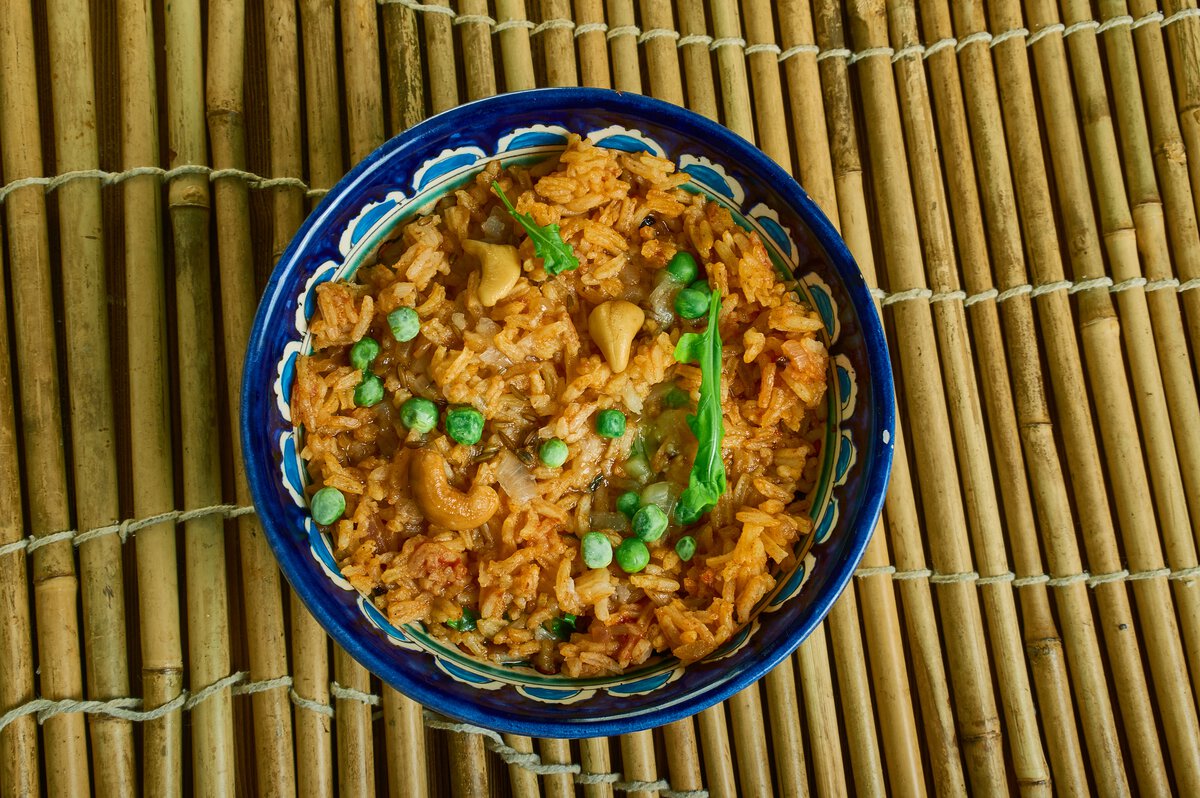
Bisi Bele Bhath is a special Khichdi due to more than one reason. It is made with toor dal instead of the customary moong dal. However, the primary difference in flavours is because of a unique masala mix that contains a balance of 30 spices. This spice mix makes it one of the unique Khichdi in India, giving it a distinctly savoury taste. It is loaded with a variety of vegetables and served with a generous drizzling of desi ghee.
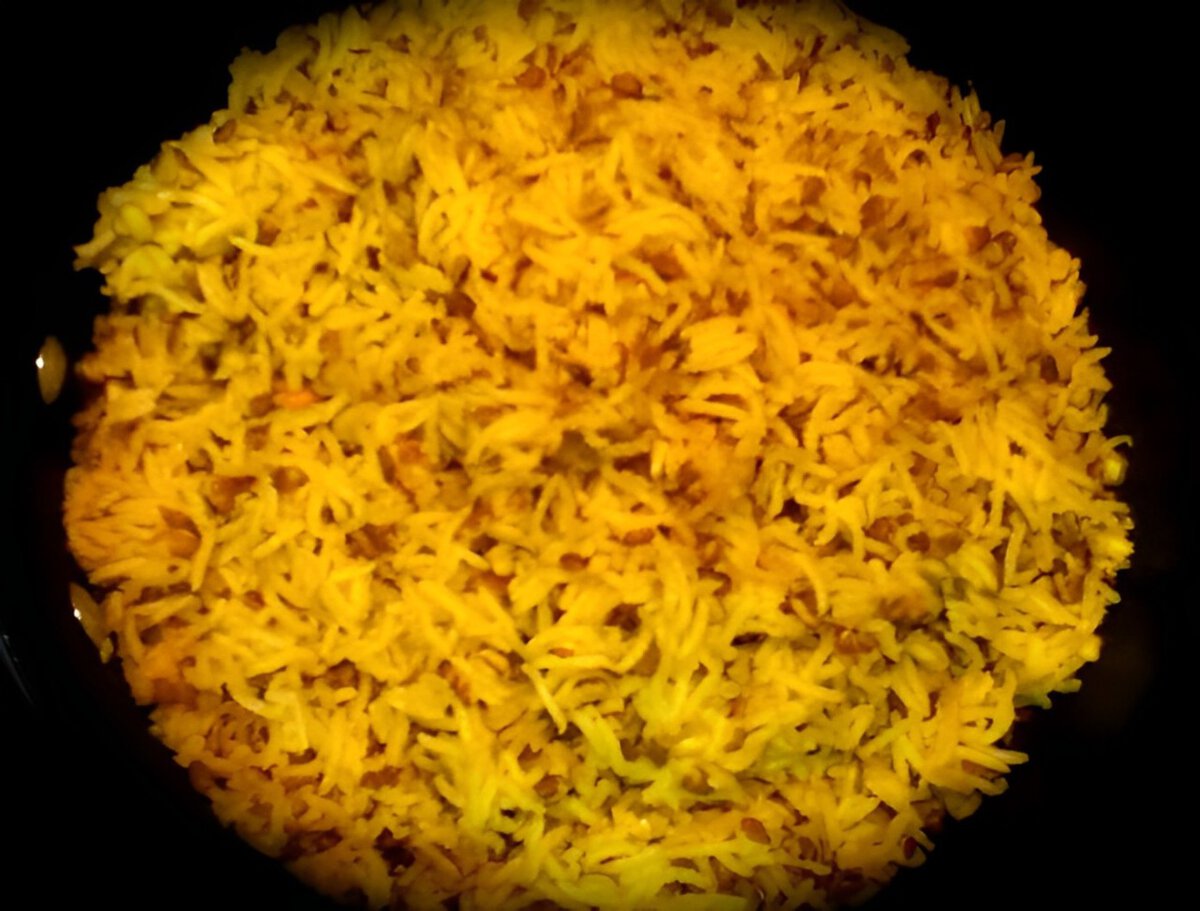
Mong Khetchir is indeed a traditional Kashmiri Khichdi. It is a simple, nutritious, and comforting dish made primarily from rice and split green gram (moong dal). This is one of the types of Khichdi in India that is often flavoured with various spices such as cumin seeds, asafoetida (hing), turmeric, and other local Kashmiri spices, and it is usually served hot with ghee or butter.
This dish is popular in the Kashmir region due to its simplicity, taste, and the ease with which it can be prepared. It is best enjoyed with 'kadam ka achaar'. It is traditionally served as a sacrificial offering to the local deities on Khetsimavas.
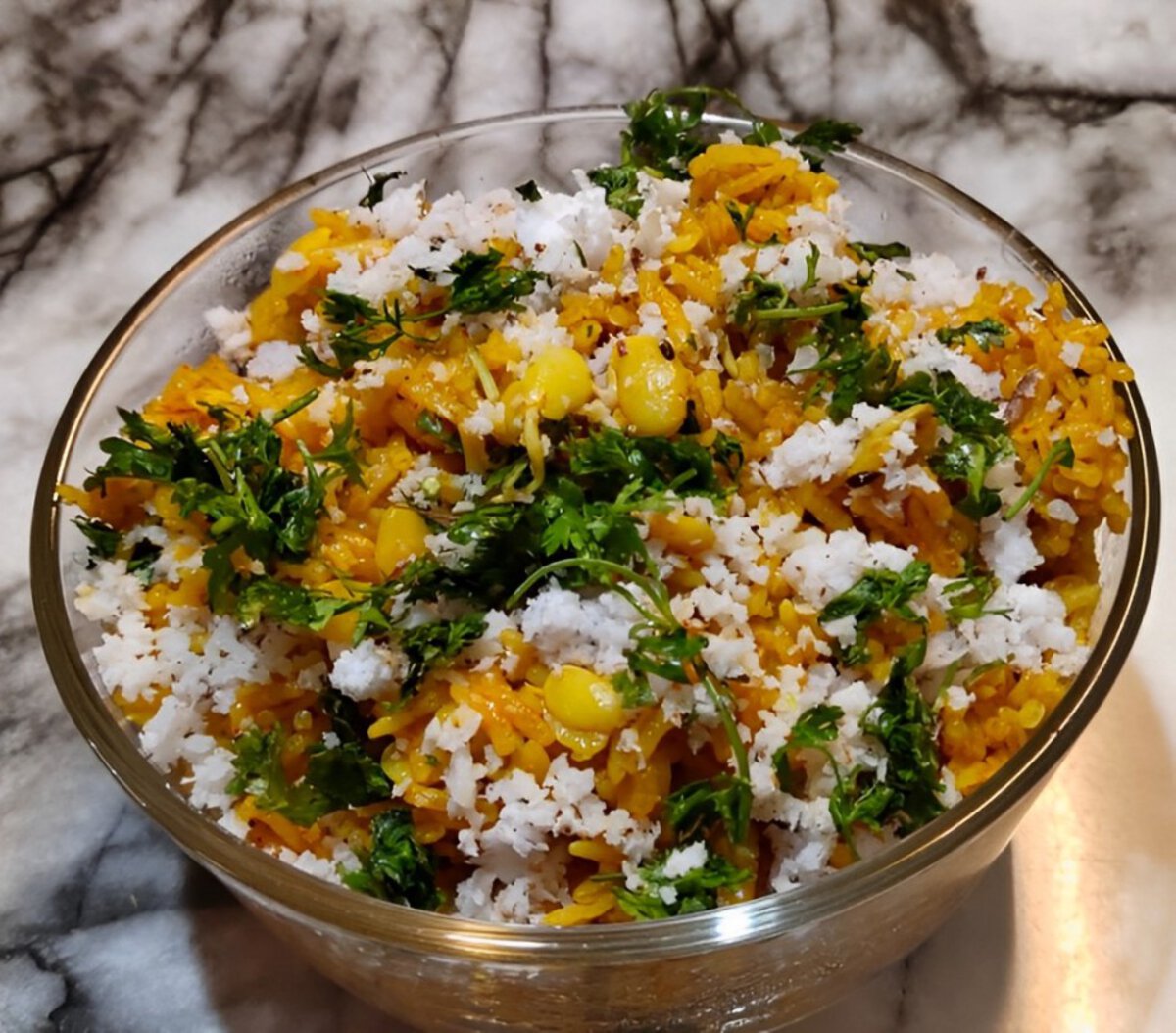
Dalimbi Bhat, made with sprouted field beans (vaal dal) and rice, is a flavourful and nutritious Khichdi. The sprouted field beans are known for their high protein content and health benefits. This dish stands out amongst the different types of Khichdi in India because of its unique flavour profile. This unique flavour comes from the use of mustard oil, onion, tomato, garlic, and goda masala.
Goda masala is a special blend of spices, including dried coconut, coriander seeds, sesame seeds, stone flower, and other ingredients, which gives the dish a distinct taste and aroma. Dalimbi Bhat is typically served with yoghurt, raita, or salad.

Just like the Bihari Khichdi listed above, Amla Khichdi is traditionally prepared during Makar Sankranti. It is one of the unique types of Khichdi in India.
Made with split black gram (urad dal), rice, and Indian gooseberry (amla), this dish is rich in vitamin C, antioxidants, and other nutrients. Amla Khichdi is cooked with spices like cumin seeds, asafoetida, turmeric, red chilli powder, and ghee or oil for tempering. It has a soft, porridge-like consistency and can include vegetables for added nutrition.
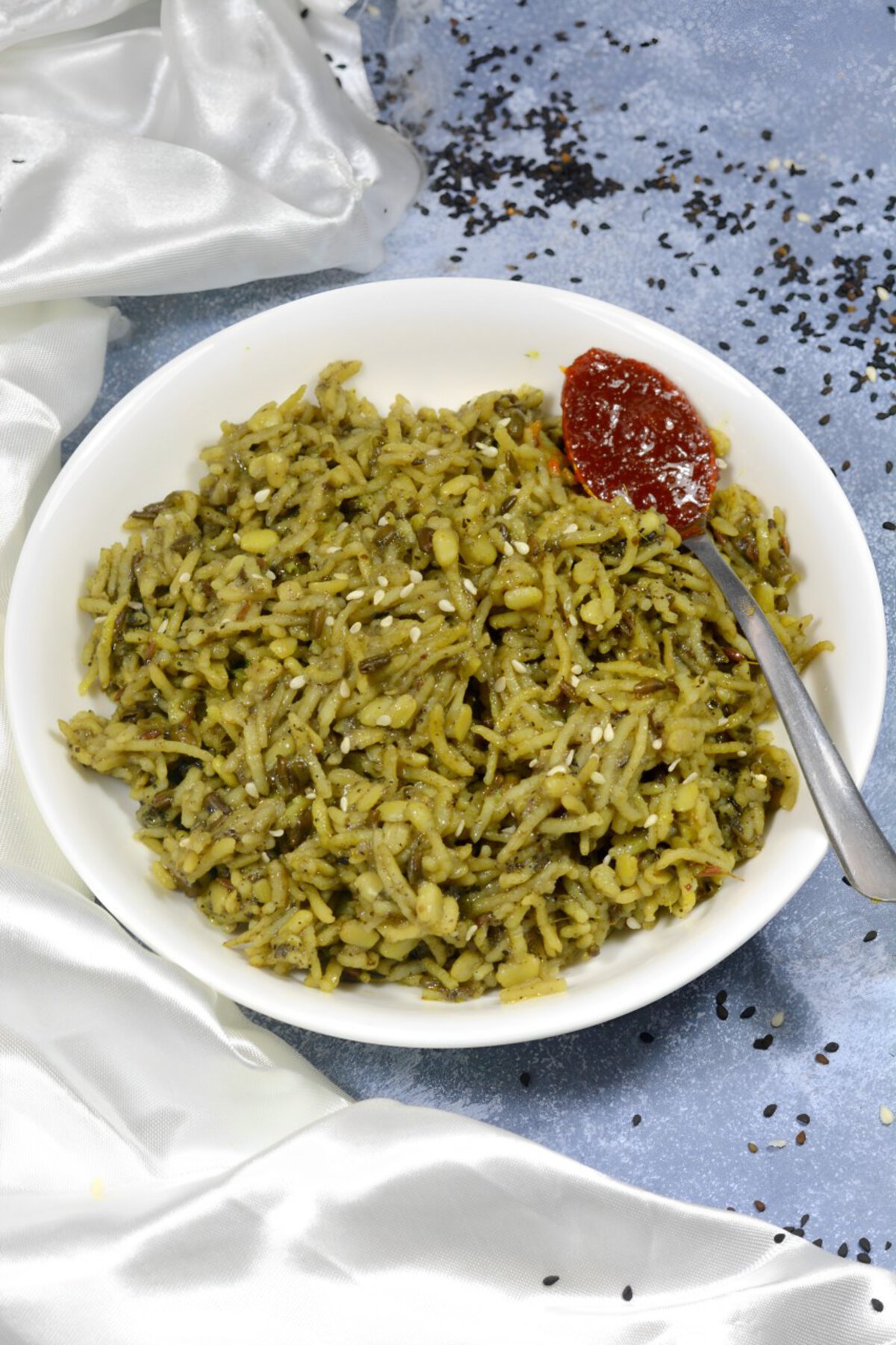
Garhwal Khichdi, or Til Khichdi, is a traditional dish from Uttarakhand, India. This Khichdi is made with rice, black gram (urad dal), and sesame seeds (til). Popular in winter, it provides warmth and energy. Preparation involves soaking rice and black gram, roasting and grinding sesame seeds, and cooking with cumin, asafoetida, turmeric, and red chilli powder. Ghee or oil is used for tempering.
Served with yoghurt, pickles, or papad, Garhwal Khichdi is a nutritious, satisfying meal, offering proteins, healthy fats, and minerals, and ideal for cold weather.

In Odisha, rice is the main dietary staple, often cooked with mustard oil, and yoghurt is a key ingredient in many dishes. Now, with rice and yoghurt being favourites in this part of India, Khichdi (called khechudi in Orissa) will be an essential dish, of course.
Khechudi enjoys widespread popularity in Odisha, featuring diverse variations such as adahengu khechidi (ginger-asafoetida Khichdi) and moong dal Khichdi. Adahengu khechidi holds particular significance in the Jagannath Temple. In households, moong dal khechudi and other variations are commonly accompanied by papad, pickle, curd, aaloo bharta, baigan bharta, raita, dalma, and chutney.
There you have it. Different types of Khichdi in India from various states. Each type has a unique taste and flavour. Nevertheless, all types of Khichdi have one thing in common – they are delicious.
Experience the amazing flavours of these types of Khichdi in their respective states with Club Mahindra.
Club Mahindra offers an unforgettable, immersive culinary journey through various regional dishes. Our expert chefs prepare local cuisine with high-quality ingredients and traditional recipes, ensuring you experience authentic flavours.
Our well-curated menu, combined with our warm hospitality, ensures that your dining experience at Club Mahindra is nothing short of extraordinary.
Mahindra Holidays & Resorts India Ltd. (MHRIL), a part of Leisure and Hospitality sector of the Mahindra Group, offers quality family holidays primarily through vacation ownership memberships and brings to the industry values such as reliability, trust and customer satisfaction. Started in 1996, the company's flagship brand ‘Club Mahindra’, today has over 300,000 members , who can holiday at 140+ resorts in India and abroad.
We use cookies to personalise content and to provide you with an improved user experience.By Continuing to browse this site you consent to the use of cookies.Please visit our cookie policy for further details.

Welcome to ClubMahindra.com In order to provide a personalised experience for you, we use cookies to enable some website functionality. Cookies help us see which articles most interest you; allow you to easily share articles on social media channels; permit us to deliver content personalised to your interests and locations; along with many other site benefits. For more information, please review our Cookie Policy
When you visit any website, it may store or retrieve information on your browser, mostly in the form of cookies. This information might be about you, your preferences or your device and is mostly used to make the site work as you expect it to. The information does not usually directly identify you, but it can give you a more personalized web experience. Because we respect your right to privacy, you can choose not to allow some types of cookies. Click on the different category headings to find out more and change our default settings. However, blocking some types of cookies may impact your experience of the site and the services we are able to offer.
Because we respect your right to privacy, you can choose not to allow some types of cookies and you have the right to withdraw your consent by send a mail to email id [email protected]
These cookies are essential in order to enable you to move around the site and use its features, such as accessing secure areas of the site. Without these cookies, services you have asked for cannot be provided.
These cookies allow us to employ data analytics so we can measure and improve the performance of our site and provide more relevant content to you. These cookies don't collect information that identifies a visitor down to an individual level that is available to us. These cookies are not passing personally identifiable information to any external third party other than in limited cases when we engage a service provider to act on our behalf but who is then unable to use the data for their own purposes.
Performance cookies are generally third-party cookies from vendors we work with or who work on our behalf that collect information about your visit and use of the Club Mahindra website, for instance which pages you visit the most often, and if you get error messages from web pages. These cookies don't collect information that identifies a visitor. All information these cookies collect is anonymous and is only used to improve your overall experience on how the website works. Third party vendors may have access to this data and may use it to improve their overall services and offerings.
Functionality cookies allow a site to remember choices you make (such as your user name, language or the region you are in) and provide more enhanced, personal features. These cookies cannot track your browsing activity on other websites. They don't gather any information about you that could be used for advertising or remembering where you've been on the Internet outside our site.
Third-party advertising and social media cookies are used to (1) deliver advertisements more relevant to you and your interests; (2) limit the number of times you see an advertisement; (3) help measure the effectiveness of the advertising campaign; and (4) understand people's behaviour after they view an advertisement. They are usually placed on behalf of advertising networks with the site operator's permission. They remember that you have visited a site and quite often they will be linked to site functionality provided by the other organization. This may impact the content and messages you see on other websites you visit. If you do not allow these cookies you may not be able to use or see certain these sharing tools content on our website.